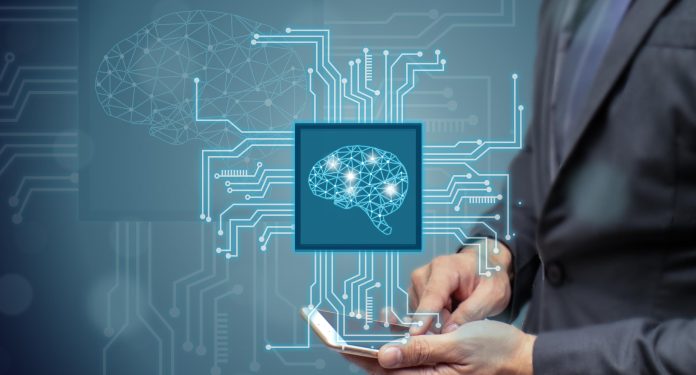Deep learning algorithms are a category of machine learning methods that draw inspiration from the workings of the human brain. Such methods use artificial neural networks made up of interconnected nodes or neurons in handling data. Deep learning algorithms are the driving force behind modern artificial intelligence. They enable machines to learn from vast amounts of data, recognize patterns, and make decisions with minimal human intervention. These algorithms are modeled after the structure and function of the human brain, using artificial neural networks composed of layers of interconnected nodes.
Usually, deep learning algorithms are divided into groups according on the neural network architecture they employ:
- Feedforward neural networks (FNNs): The fundamental architecture of feedforward neural networks (FNNs) allows data to flow in a single direction.
- Convolutional neural networks, or CNNs, are specialized for analyzing images and videos.
- Recurrent neural networks (RNNs): These networks are made to process sequential data, such as language or time series.
- Autoencoders: For dimensionality reduction and unsupervised learning.
- Generative models, such as GANs and VAEs, generate new data instances.
- GNNs (Graph Neural Networks): Utilize data that is graph-structured.
- Transformers: Using attention mechanisms, they transformed NLP tasks.
Examples of Deep Learning Algorithms:
- Image Classification: CNNs used for facial identification or medical imaging.
- Speech recognition: RNNs and LSTMs are utilized in virtual assistants.
- Text Generation: Chatbots and translation use transformers like GPT.
- Anomaly Detection: Fraud detection using autoencoders.
- Data Synthesis: GANs that produce lifelike pictures or movies.
Top 10 deep learning algorithms:
- Convolutional Neural Networks (CNNs)
Convolutional Neural Networks are applied to process grid-like data such as images by convolution layers that can identify spatial hierarchies and patterns such as edges and textures. It is widely used in image recognition applications ranging from facial recognition to medical imaging for tumor detection and object detection in autonomous vehicles.
- Recurrent Neural Networks (RNNs)
Recurrent Neural Networks were designed to work with sequences of data through loops in the network to keep a memory of past inputs. They are thus best suited for tasks such as speech recognition, time-series forecasting (e.g., stock prices), and natural language processing where context from previous data points is essential.
- Long Short-Term Memory Networks (LSTMs)
LSTMs are specialized RNNs that can learn longer-term dependencies and avoid the vanishing gradient problem. They are best suited for applications like machine translation, predictive text input, and chatbots, in which realizing the bigger picture of a conversation or an incoming sentence is advantageous.
- Generative Adversarial Networks (GANs)
GANs consist of two networks-the discriminator and the generator-that compete against one another in order to create realistic synthetic data. These models are used in generating lifelike images, creating deepfake videos, producing art, and augmenting datasets-classifying certain datasets-so that their training with respect to other models can be improved.
- Autoencoders
Autoencoders are types of unsupervised learning models that map input data into a lower-dimensional representation, then reconstruct this representation. They are used for anomaly detection in cybersecurity, image denoising, and dimensionality reduction for visualization or further high-end analysis.
- Deep Belief Networks (DBNs)
DBNs are layered networks built using Restricted Boltzmann Machines that learn to represent data hierarchically. They’re useful for tasks like image and speech recognition, where uncovering hidden patterns and features in large datasets is essential.
- Variational Autoencoders
VAEs are a probabilistic extension of autoencoders that learn latent representations of data with some added regularization. They are commonly found being used in drug discovery for generating new molecules, handwriting synthesis, speech synthesis, or just compression of data in a way that retains important features.
- Graph Neural Networks (GNNs)
GNNs were built to work with data structured as graphs and capture relationships between nodes. They are especially useful in social network analysis, recommendation systems, and fraud detection, wherein understanding the relationships between entities is key.
- Transformers
Transformers rely on attention mechanisms to attribute relative importance to different chunks of input data. This has ushered in advancements in NLP tasks—translation, summarization, and question answering to name a few—while also leading to their use, to some extent, in vision tasks like image captioning and object detection.
- Multilayer Perceptron (MLP)
MLPs stand for multilayer perceptrons, or feedforward neural networks with more than one layer of neurons separating input and output. They are suited for handwritten digit recognition, fraud detection, and customer churn prediction, where structured data and non-linear relationships have to be modeled.
Conclusion:
The latest changes in AI are powered by deep learning algorithms. These algorithms are used with varying strengths and applications, for instance, CNNs that study images, and Transformers that understand human language.
Following the implementation of AI for applications in health sciences, financial management, autonomous systems, and content creation, possessing knowledge about these top 10 deep learning algorithms becomes essential for both practitioners and researchers.








